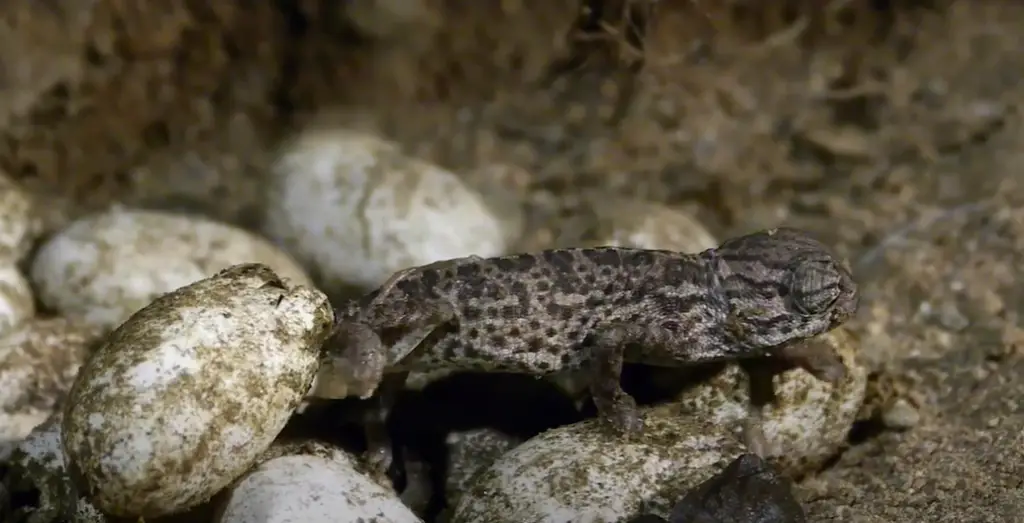Do you know the difference between a mammal and a reptile? If not, don’t worry – you’re not alone. Many people are unsure of the distinctions between these two types of animals. In this article, we will take a comprehensive look at the differences between mammals and reptiles. We’ll discuss everything from their physical characteristics to their behavior in the wild. So, let’s get started!
Mammals
Mammals are warm-blooded animals that have fur or hair, produce milk for their young, and breathe air. They also have a four-chambered heart – two atria and two ventricles – which allows them to efficiently pump oxygenated blood throughout their bodies. This type of animal is found in every part of the world, from the icy Arctic tundra to the sweltering deserts of Africa. Some examples of mammals include cats, dogs, horses, monkeys, whales, and dolphins. [1]
Reptiles
Reptiles are cold-blooded animals that have scaly skin, lay eggs, and breathe air. Reptiles also have a three-chamber heart – one atrium and two ventricles – which allows them to efficiently pump deoxygenated blood throughout their bodies. This type of animal is found in hotter parts of the world, such as deserts and tropical rainforests. Some examples of reptiles include snakes, lizards, turtles, crocodiles, and alligators. [2]
What are the differences?
The primary difference between mammals and reptiles lies in their physical characteristics. Mammals have fur or hair, while reptiles have scaly skin. Mammals produce milk for their young, while reptiles lay eggs. In addition, mammals have a four-chamber heart and reptiles have a three-chamber heart.
Overall, these two types of animals share many similarities – such as having four limbs and breathing air – but there are also some clear differences. Understanding these distinctions is important for those interested in wildlife, as it can help them to accurately identify species in the wild. [3]

What are the similarities?
Although there are many differences between mammals and reptiles, they also have some things in common. Both types of animals have four limbs – two legs and two arms or two wings – which allow them to move around their environment. They both also breathe air, allowing them to efficiently oxygenate their cells. Additionally, both groups are capable of learning from their environments and adapting to new situations.
These similarities demonstrate that mammals and reptiles share a common evolutionary history, even though they belong to different taxonomic classes today. Understanding this shared ancestry can help us better understand how these two types of animals evolved over time and why they exhibit certain traits in the present day. [4]
Physical characteristics
Mammals and reptiles also have some distinct physical characteristics that set them apart from one another. Mammals typically have fur or hair on their bodies, while reptiles possess a scaly skin composed of keratin plates.
Mammal brains are generally larger than those of reptiles, giving them greater cognitive skills such as problem solving and learning new behaviors. Additionally, mammals produce milk for their young and often nurse their offspring until they are old enough to survive on their own. Reptiles, on the other hand, lay eggs which provide protection and nutrition during the early stages of development.
Hunting
Mammals and reptiles also differ in their hunting and eating habits. Mammals tend to be more active hunters, pursuing their prey with greater speed and agility due to their larger brains. They often hunt in packs or herds, making use of cooperative strategies to bring down even the most formidable opponents.
Reptiles, on the other hand, are solitary predators who rely on ambush tactics to capture their prey. Their scaly skin provides them with some protection from predators but they still must carefully stalk their prey before striking with lightning-fast speed.
Habits
Finally, mammals and reptiles also differ in their preferred habitats. Mammals are typically found in a variety of terrains such as forests, deserts, grasslands, and even urban areas. Reptiles, however, tend to prefer more isolated environments like deserts and tropical rainforests.
In terms of behavior patterns, mammals tend to be quite social while reptiles are solitary creatures who prefer to hunt alone. This difference is especially pronounced among the larger species of both groups – with mammals often forming large herds or packs for protection from predators while reptiles remain on their own.

Living conditions
Mammals and reptiles also have different requirements for their living conditions. Mammals typically require more water and food than reptiles, as they must feed their young milk from birth until they are able to hunt or find food on their own. Reptiles, on the other hand, can survive in arid environments with limited food sources due to their ability to enter a state of hibernation during drought periods.
Mammal habitats also tend to be larger than those of reptiles because mammals need more space for mating, rearing young, and avoiding predators. This means that mammals often inhabit larger ecosystems such as forests or grasslands while reptiles prefer smaller areas such as deserts and tropical rainforests.
Mammals as pets
Despite the differences between mammals and reptiles, humans have kept both types of animals as pets for centuries. Mammals are considered by many to be more personable due to their larger brains and social nature, which allows them to form strong bonds with their owners.
Reptiles as pets
Reptiles, however, can make just as good of pets as mammals. They are often more low-maintenance than their mammalian counterparts and require less space, food, and water. Additionally, they tend to be quieter and less active than some other pet options such as cats or dogs.
Whether you decide to adopt a mammal or a reptile will depend on your personal preferences and lifestyle. Both types of animals have their own unique characteristics that can make them excellent companions if given the right care and attention. Whichever you choose, it is important to do your research in order to ensure that your pet is provided with the proper environment to thrive!
Can mammals and reptiles live on one territory?
Although it may seem counterintuitive, mammals and reptiles can in fact live on the same territory. This is because both animals need similar resources for survival such as food, water, and shelter. As long as these requirements are met, it is possible for them to coexist in the same environment.
However, when considering whether or not to house both types of animals together, it is important to consider their temperament and behavior. Mammals tend to be more active than reptiles and will often require larger enclosures that provide enough space for movement and playtime. Additionally, they must have access to an adequate number of hiding places in order to feel safe in their new home. Reptiles on the other hand are solitary creatures who prefer smaller, more secluded living areas.
Despite their differences, both mammals and reptiles can live in harmony when given the right environment and care.
Maintenance at home
Regardless of whether you choose to adopt a mammal or reptile, there are certain maintenance tasks that must be performed in order for your pet to live a healthy and happy life.
For mammals, it is important to make sure their environment is free from predators and hazards. This may include keeping their enclosure clean and providing plenty of hiding places. Additionally, they must have access to fresh food and water as well as different types of bedding depending on the type of animal being kept.
Reptiles require similar care but with some minor differences. Since most reptiles do not require much space, enclosures should be relatively small with plenty of places for them to hide such as logs or rocks. Additionally, their environment should also be kept clean and maintained to the proper temperature and humidity levels depending on the species. Lastly, they must have access to a variety of fresh food and water sources.
By following these guidelines, you can ensure that both mammals and reptiles can coexist in harmony in one space – providing an enriching experience for both owners and pets alike!

FAQ
Is a bird a mammal or reptile?
A bird is neither a mammal nor a reptile, but rather its own distinct class of animal known as Aves. This class includes over 10,000 different species of birds that can be found in virtually every part of the world. Birds are warm-blooded animals with feathers and wings, making them unique from both mammals and reptiles. [5]
Is a reptile a mammal?
No, a reptile is not a mammal. Mammals are warm-blooded animals with fur or hair that give birth to live young, while reptiles are cold-blooded animals with scales or scutes that lay eggs. Additionally, mammals produce milk for their young and typically have a four-chambered heart, whereas reptiles have three-chambered hearts.
What is one difference between mammals and reptiles?
One key difference between mammals and reptiles is their body temperature. Mammals are warm-blooded animals that maintain a consistent internal body temperature, while reptiles are cold-blooded animals whose body temperature fluctuates depending on the environment. Additionally, mammals give birth to live young while reptiles lay eggs.
Is a snake a reptile or mammal?
A snake is a reptile. Reptiles are cold-blooded animals with scales or scutes that typically lay eggs. Snakes are typically long and slender animals with no legs, and they can be found in almost every part of the world. [6]
Useful Video: MAMMALS AND REPTILES
Conclusion
Hopefully, this article helped clear up some of the confusion between mammals and reptiles. These two groups of animals are quite different, but they both have unique and interesting features. If you want to learn more about either group of animals, there are plenty of resources available online and in libraries.
References:
- https://tpwd.texas.gov/publications/nonpwdpubs/young_naturalist/animals/warm_and_cold_blooded_animals/
- https://www.nwf.org/Educational-Resources/Wildlife-Guide/Reptiles
- https://pediaa.com/difference-between-mammals-and-reptiles/
- https://pediaa.com/difference-between-mammals-and-reptiles/
- https://www.activewild.com/is-a-bird-a-mammal/
- https://www.sciencedirect.com/topics/pharmacology-toxicology-and-pharmaceutical-science/snake






Leave a Review